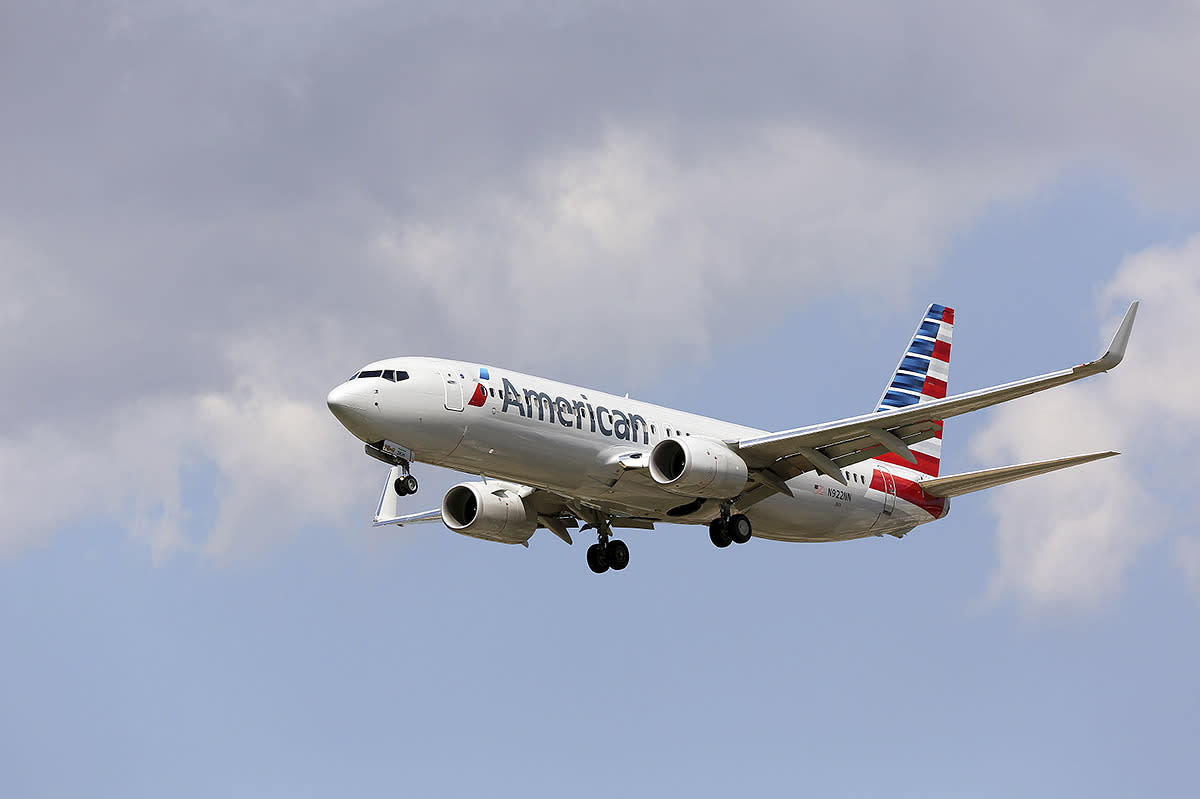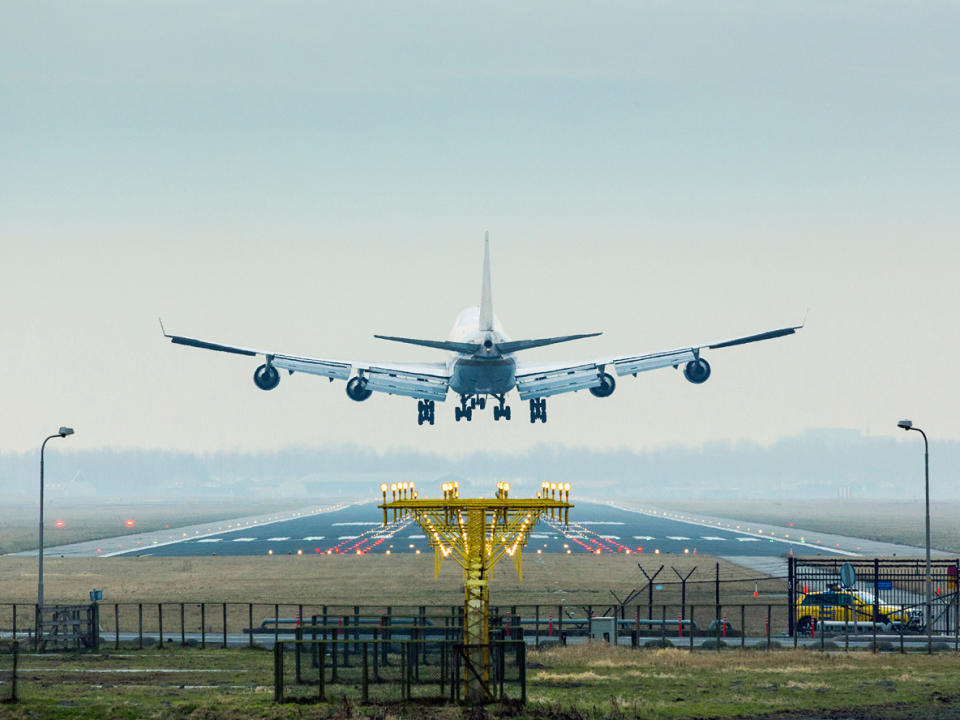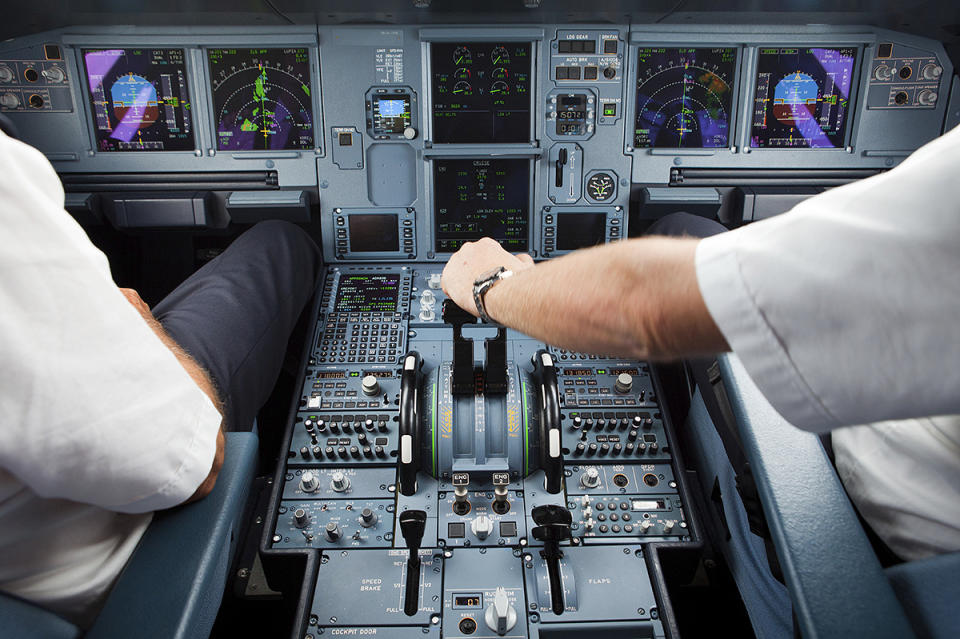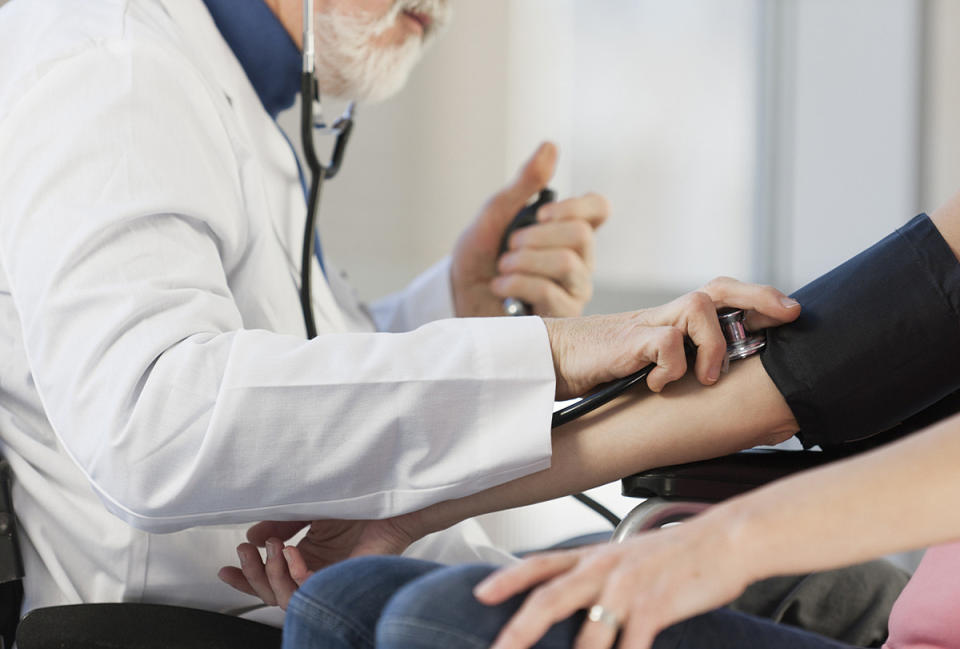What Happens if Your Pilot Dies Mid-Flight?

Earlier this week, an American Airlines captain died mid-flight. (Photo: iStock)
An American Airlines captain died inflight on Oct. 5, while sitting at the controls of a flight en route from Phoenix to Boston.
An air stewardess who was a former nurse tried to revive him, according to reports, but he passed away before the plane landed.
The aircraft, American Airlines flight 550, had to be re-routed to Syracuse where it made an unscheduled landing.
Related: The 30 Worst Decisions You Can Make on a Plane
Emergency services met the Airbus A320 aircraft. After several hours on the tarmac, and the replacement of the airline crew, the flight continued its journey on to Boston Logan International, landing just after 12.30pm local time.
Twitter users onboard took to the social media site to profess their sadness over the incident.
“The pilot died on our redeye back to Boston (leading to 4h in Syracuse). life is short. do what you love before it’s too late,” one passenger wrote.

There have been several recent incidents where a pilot fell ill and someone else had to step in and safely guide the plane to an emergency landing. (Photo: Getty Images)
While a commercial pilot has not died during a flight in over eight years, there have been several more recent emergencies involving pilots falling ill.
Earlier this year, an off duty pilot had to help land a Jet Airways flight that was forced to make an emergency landing after the captain became unwell.
Jet Airways flight 92063 was half way into its journey from Bangkok to Delhi when the first officer declared a state of emergency. Another of the airline’s pilots, who happened to be a passenger on board at the time, stepped up to help land the aircraft.
And in June 2014, a US Airways captain suffered a heart attack during a flight from Des Moines to Denver, prompting an air stewardess to make the horrifying announcement: “Does anyone know how to fly a plane?”
Related: What Really Causes Plane Crashes?
Air Force captain Mike Gongol answered the call, and assisted the co-pilot in landing the plane safely in Omaha. While a pilot becoming ill, or even dying on board is still a rare occurrence, there are multiple safety procedures in place on commercial airlines to both prevent and cope with this situation when it does happen.
“Each airline may have specific operating procedures, but it is safe to say that if a pilot falls seriously ill or dies on an airliner, the aircraft would land at the nearest suitable commercial airport that can handle that specific type of aircraft,” explains pilot Kyle Bailey—an FAA Safety Team Representative and Aviation Analyst.
"Obviously an exception might be if CPR or another life saving procedure had to be performed immediately on the ill pilot. Life saving procedures would most likely take precedence over immediate landing, and landing would be performed after attempting life saving procedure,” Bailey explained.
Following any pilot becoming unwell, it then becomes the responsibility of the co-pilot to fly the plane.

Co-pilots are qualified to land the plane solo, should an emergency situation arise. (Photo: iStock)
“Co-pilots are captain qualified, so they can land the plane solo, without a problem,” says former commercial pilot Tom Bunn, who is now a licensed therapist, author and founder of SOAR—a program that helps people overcome their fear of flying.
But what about if both pilots on board become ill?
“It would be a problem,’ Bunn says. "You would have the plane on autopilot anyway and it would navigate itself. Most likely, you would do the landing on autopilot and let the plane land itself and you simply monitor its systems.”
Obviously this is a less than ideal situation.
“If both pilots were to die, or become incapacitated, then most likely they would go through the manifest to see if any other company pilots happen to be on the flight as passengers or the next step would most likely be to see if any other certificated pilots are on plane,” Captain Bailey adds. "But that would be a last resort.”
Related: Is Your Hotel Safe Really Safe?
But luckily, that seems like a highly unlikely set of circumstances.
“I have never heard of both pilots getting sick on a flight,” Bunn stated, adding that pilots are fed different meals on board, specifically to avoid them becoming unwell from food poisoning at the same time. They are also trained to look out for changes in behavior or appearance of the people working alongside them.
“They train pilots to recognize whats called subtle incapacitation,” he says. "For example if a person was having a mini-stroke. Normally when you are flying along there is not much to talk about so there might be long periods of silence. So you need to check every few minutes and say something to the person sitting next to you. That way you can see if they are still mentally competent. That is one of the safeguards.”

Pilots are regularly given extensive medical exams to make sure they are in good health. (Photo: Getty Images)
Airline pilots in the United States are given rigorous medical examinations multiple times a year to ensure they are at the peak of their physical fitness.
"At age 35 a pilot has to have an EKG, then again at 40, then annually after that,” Bunn explains. "There are two or three physicals a year. The airlines give their pilots a physical. Then the pilots can go to a certified FAA doctor to get their annual physical. Two a year if you are over 40.”
Being healthy is also within the pilots’ best interests.
“A good portion of pilots are health conscious,” Captain Bailey said. “If they were to fail the medical examination, it would mean they would not be able to fly and therefore not earn any money.“
So while pilot illness or death is incredibly rare onboard, be assured that there are multiple safeguards in place to ensure that pilots are incredibly healthy, and that a plane can be landed safely should the worst happen on board.
Let Yahoo Travel inspire you every day. Hang out with us on Facebook, Twitter, Instagram, and Pinterest.

